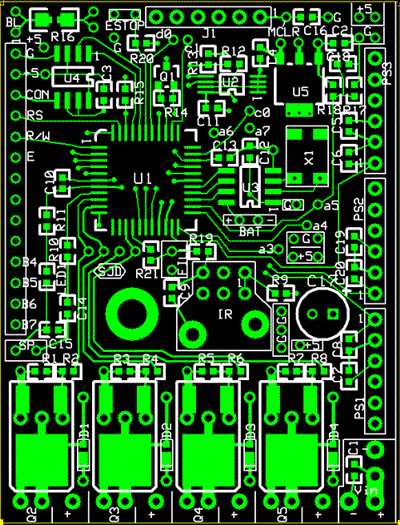Triple check. What else can I suggest?
What is your design program? In Eagle there are some tools that help to find shorts or unconnected parts.
Use these tools to make it easier for checking.
Photos would be great for this!
Good luck and keep us posted.
Ioannis





 and I don't relish the idea of soldering one side by hand. I know there's special glues available for that, but that takes more time so I'd rather not populate both sides if I can avoid it.
and I don't relish the idea of soldering one side by hand. I know there's special glues available for that, but that takes more time so I'd rather not populate both sides if I can avoid it.





Bookmarks